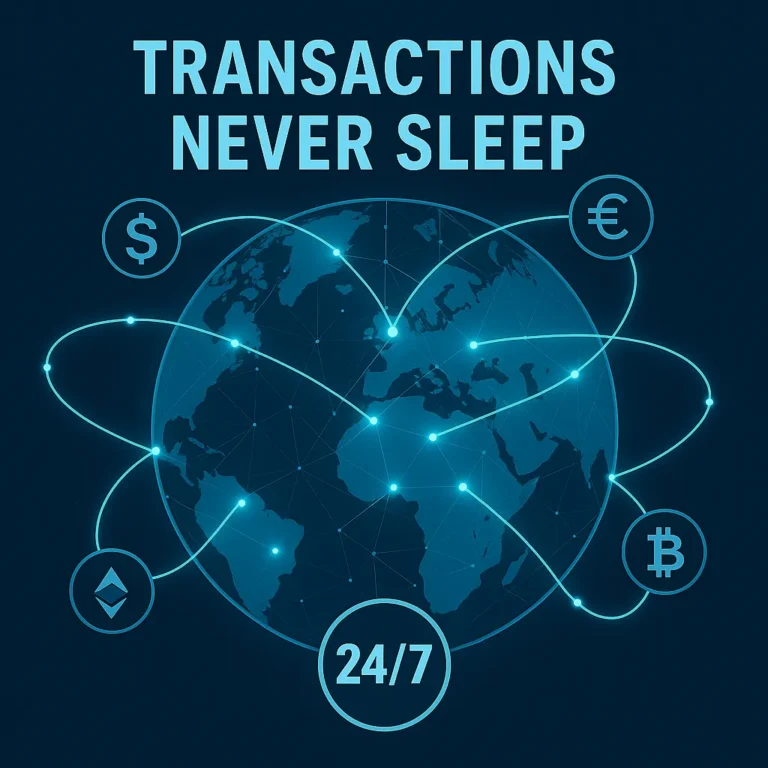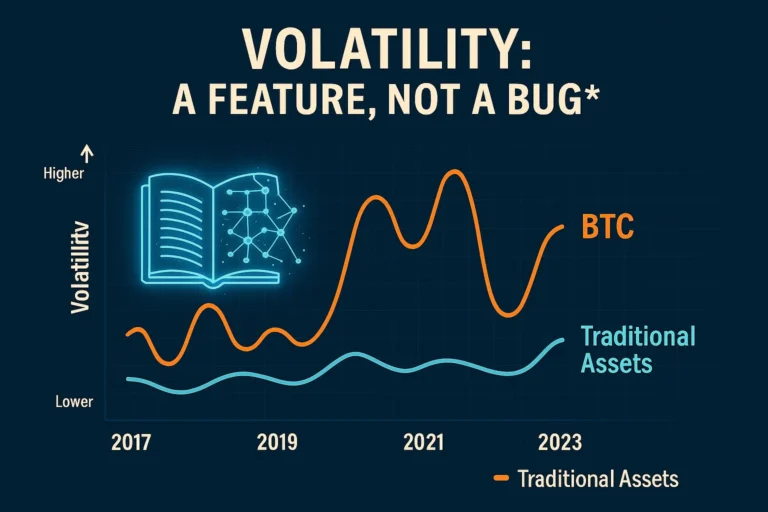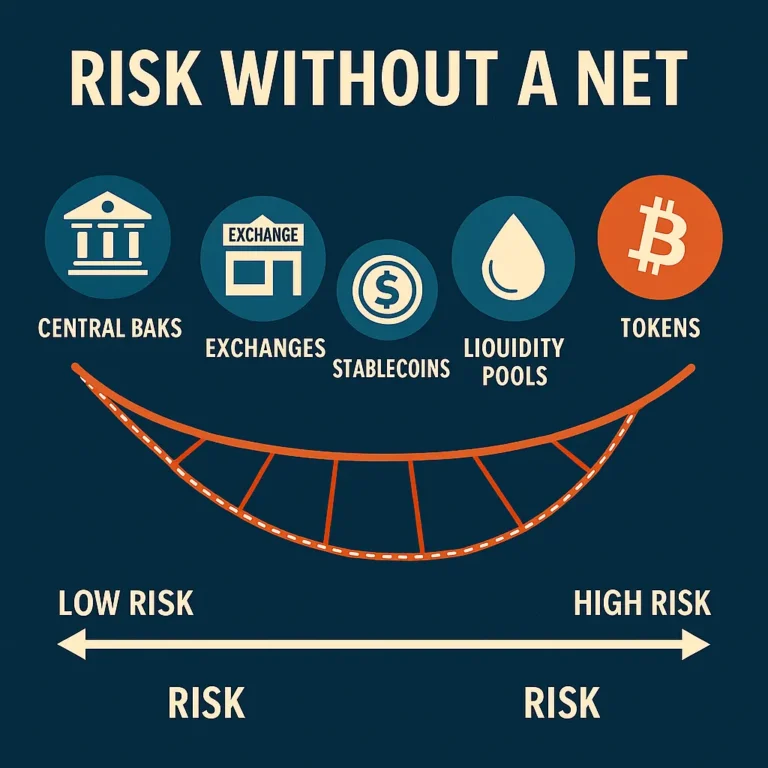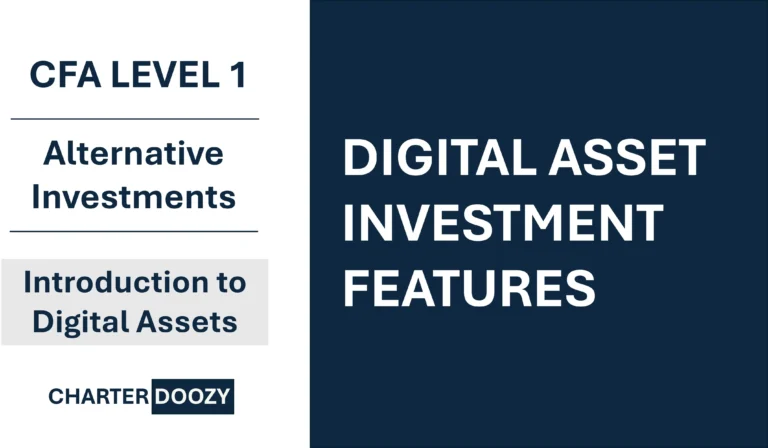Transcription
[00:00:00] Slide 2 – Overview
How’s it? And welcome back to the next section on digital assets. And in this section specifically, we are going to be looking at the investment features of digital assets.
So before we do that, let’s just zoom out for one minute and discuss digital assets. So digital assets behave very differently from traditional investments like stocks and bonds and cash. Their volatility, their liquidity and their risk return profiles introduce both challenges as well as opportunities, um, into an investment portfolio.
As a CFA candidates and a future finance professional, you’ll obviously need to understand these features. Not just to analyze the investment, but also to explain them clearly to clients as well as to colleagues, because trust me, when Bitcoin is up a hundred percent on the year, you will be getting many phone calls and emails asking why more of the portfolio is not allocated to crypto.
So this section will give you the mental tools to assess where the digital assets can actually enhance the portfolio and if they can, when it’s appropriate and under what conditions.
Let’s jump straight into it.
[00:01:12] Slide 3 – Uncertain Valuation
Okay. Let’s look at one of the biggest challenges that comes to mind when looking at digital assets, and their investment value. And that is going to be valuation.
Valuation, unlike stocks or bonds, digital assets don’t typically generate cash flows like dividends, earnings, or coupons, and that means we can’t use classical models such as the DCF, the discounted cash flow model, et cetera.
Instead, investors use models like the stock-to-flow-ratio, Matcalfe’s law and other network based valuation methods. The problem with this is that these models are statistical in nature and based quite heavily on the input assumptions. And that means that there’s basically no industry consensus, which can lead to wildly different valuation outcomes between players, and therefore a lot, a lot of price uncertainty.
That obviously opens up opportunity, but also opens up a fair amount of risk. And as an investor, as a portfolio manager, as a advisor to your clients, this means you need to take um, a fair amount of caution and have a more than a teaspoon of humility when approaching pricing of digital assets.
[00:02:33] Slide 4 – Liquidity Considerations
Liquidity is another area where digital assets vary widely from traditional assets. So digital assets like Bitcoin and Ethereum are generally quite highly liquid, at least compared to other digital assets they trade on most exchanges.
There’ll be, uh, derivative contracts linked to some of these alternative digital currencies, and they tend to have deep order books. But once you go beyond, I’d say the top 5 to 10 tokens or coins, things can change quite drastically.
So many of the alt coins are thinly traded, which means large orders can cause significant price movements, or you can, you can end up in a position where you’re not able to exit a position either quickly, timelessly, or you are going to exit at extremely different multiples than, than maybe what was displayed on the exchange.
So liquidity also depends on the token exchange listing, trading volumes, and even the clarity of its regulatory status. So definitely don’t assume all digital assets offer the same level and tradability as maybe some of the big names, which you’ll know from the press.
[00:03:46] Slide 5 – Market Efficiency
The question is, are digital asset markets efficient?
The short answer, um, not very.
So compared to developed equity and bond markets, crypto is actually still in its very early days. Prices can be driven by sentiment, by herd mentality, by social media hype and limited arbitrage across exchanges. So this can create short term opportunities.
But it’s also able to introduce significant noise and volatility. So the bottom line, if you’re looking for persistent alpha, you might be able to find a chart, but you need to be aware that it comes with risk and probably a level of inconsistency.
[00:04:33] Slide 6 – Diversification with Traditional Assets
One of the most commonly cited benefits of digital assets is diversification.
And there’s some truth to this because the underlying mechanism driving returns, let’s say in a stock market or in a bond market, are fairly different to what is driving it in, let’s say a meme coin or an alt coin, for example. So historically, cryptocurrencies like Bitcoin have actually shown low correlation with equities, with bond, and even with commodities such as gold as a storage of value.
But here’s the nuance that you need to be aware of. Correlations are not static. So obviously you, what you want is an asset that is diversified, has low correlation with traditional markets, which means if, for example, your stock portfolio is tanking and coming down where you want some resilience and some resistance coming through that uncorrelated asset class, let’s say in this example Bitcoin, Ethereum.
But what’s basically shown is that during times of market stress, so you can think of COVID-19 crash, global financial panics, et cetera, those correlations tend to rise across all asset classes, including crypto, which means those cross subsidization and those negative correlations that you had hoped to find between these asset classes all of a sudden disappear.
Um, and you think about it, that sort of makes some sense because what happens during panic is that investors typically are risk off and there would be risk off across their portfolios. And so even though the underlying mechanisms, let’s say between, again, stocks and crypto may be different, the reality is if investors decide to pull risk off the table, put money into cash, or maybe into gold et cetera. Or they’re gonna take it out of their stock portfolio at the same time as they take it out of their crypto portfolio.
And so you tend to see that during times of panic, the assets actually are more correlated and lower offer of a lower diversification benefit than maybe we, uh, would’ve hoped for.
And so, while digital assets can offer diversification, especially during normal markets, that benefit may disappear actually when you need it most.
[00:06:44] Slide 7 – Risk & Return Tradeoffs
Digital assets have an unconventional risk reward profile.
Yes, they can deliver massive gains. And I think Bitcoin’s multi-year rise is legendary. It’s obviously created billionaires in the wake,
um, as well as some obnoxious bling individuals. That’s probably my jealousy coming out. Um, so yes, obviously the swings and the returns have been enormous, but on the flip side, I think the same is true.
These returns can drop significantly 20, 30, 40, 50% over a matter of days. And I mean, if you look at the chart here, I’ve just gone back, um, a couple of months, you can see some of those massive green candles as well as some of those very, very long and elongated, um, red candles. And so you can see that risk reward, that volatility is there and it’s a, it’s, it’s a feature of this asset clause.
Um, I think more from a statistical point of view and from a CFA, um, quant point of view, the return distribution are, are, are often skewed. Um, with fat tails, you can think in terms of skewness and ketosis and what this means is that extreme outcomes happen more often than let’s say with a normal distribution.
So this is obviously a statistical feature, but it’s actually more than just an academic point. It’s critical for portfolio construction. So if you’re going to include digital assets in a portfolio, you really need to be thinking about downside protection. So maybe that’s through allocation caps, or maybe it’s through stop loss rules, et cetera.
But you need to have a plan in place, especially as an institutional investor, especially as a professional investor. This is not the roulette table, and so thinking about it in terms of risk reward profiles, in terms of that downside protection is going to be really critical.
[00:08:41] Slide 8 – Key Takeaways
Let’s recap what we’ve covered so far.
So digital assets are volatile. They’re hard to value, they’re illiquid, especially outside of the top few tokens. As we’ve said, their market behavior is driven by evolving structures, by sentiment. And whether we like to admit it or not, there’s more than a few cases where it’s just down right hype.
They can potentially diversify traditional portfolios, but the correlations between these alternative investments, these digital assets and the traditional asset classes tend to fluctuate particularly during times of crises. And lastly, you should think of these more as speculative or emerging assets that are going to require deep due diligence upfront as well as active risk management, ongoing risk management.
[00:09:33] Slide 9 – Review Question 1
Okay. A couple of quick questions just to test that you’ve been awake. Firstly, which of the following best explains why digital assets are considered difficult to value?
[00:09:44] Slide 10 – Answer 1
The correct answer is C. They lack intrinsic cash flows, as we said, because digital assets don’t generate income like dividends or coupons. Therefore, the traditional valuation models are, they’re not gonna be applicable, and this makes pricing a lot more speculative.
[00:10:05] Slide 11 – Question 2
Next question. Which factor contributes most directly to digital assets high volatility?
[00:10:13] Slide 12 – Answer 2
The answer there is C, regulatory uncertainty. So shifts in government policy or legal interpretation can dramatically affect prices often with little notice actually. So that’s a key volatility driver.
[00:10:28] Slide 13 – Question 3
Question number three. Which statement about liquidity in digital asset markets is most accurate?
[00:10:37] Slide 14 – Answer 3
Answer B, Bitcoin and Ethereum are among the most liquid digital assets, so these two really dominate trading volumes and have relatively stable market access compared to some of the smaller tokens.
[00:10:52] Slide 15 – Question 4
Last one for this section, A portfolio manager adds digital assets for diversification. What should she consider?
[00:11:02] Slide 16 – Answer 4
And the correct answer there is B. Correlation with traditional assets may rise in market crashes, as we said. So diversification can break down in stressed environments, which is a risk. That you as a CFA candidate must understand and be able to communicate.
[00:11:20] Slide 17 – Conclusion
Okay, great. Let’s wrap this up and just unpack what it is exactly that we’ve mastered in this section. So firstly, you now understand why digital asset valuation is difficult and how things like volatility and illiquidity can complicate investment decisions. Number two, you can now assess where digital assets might fit into portfolio.
But perhaps more importantly, where they don’t fit into a portfolio. And thirdly, you’re equipped now to analyze the risk return trade-offs of digital assets and the limits of their diversification.
That’s it for now. I hope you’ve enjoyed and I will see you as we move into the next section.

The Most Tempting, Most Dangerous Assets You’ll Ever Own
Why Digital Assets Demand a New Investor Playbook
You know you’re dealing with a new asset class when the charts look like ski slopes, the fundamentals are written in code, and every conversation begins with, “This might sound crazy, but…”
Digital assets are not just volatile. They are seductive.
They whisper promises of freedom, decentralization, 10x returns. And at the same time, they throw every rule of traditional investing out the window. No P/E ratios. No cash flows. No central authority to call when things break.
So why are smart investors—disciplined, data-driven, CFA-toting professionals—taking them seriously?
Because deep down, we know: something structurally different is happening.
This article is for anyone who wants to understand the real investment features of digital assets. Not the hype. Not the memes. The economics. The risk. The opportunity. And the discipline it takes to survive them.
Feature #1: Code Is Law
Let’s start with the ground zero of digital assets: smart contracts.
Smart contracts are automated, self-executing pieces of code that run on a blockchain. They can transfer value, validate conditions, execute trades—without human intervention.
This turns the traditional financial model on its head. In legacy finance, execution depends on people, processes, and trust. In digital assets, execution is hard-coded. If the code says it happens, it happens. No reversals. No callbacks. No exceptions.
Implication
You’re no longer evaluating companies. You’re evaluating logic.
And logic is ruthlessly indifferent to your intentions.

Feature #2: 24/7, Borderless, Frictionless
Digital assets don’t sleep. They don’t close for holidays. They don’t need SWIFT messages or ACH clearing delays. You can move $10 million worth of ETH across the world in seconds. From a phone.
Compare that to the labyrinth of correspondent banks, settlement layers, and FX desks in traditional markets.
That speed and accessibility creates:
Liquidity for some tokens (BTC, ETH)
Constant price discovery
Global participation, often from retail before institutional
But it also introduces fatigue and FOMO-driven behavior. It’s hard to hold a long-term thesis when prices change every 4 seconds.
Insight
Discipline becomes a competitive advantage.

Feature #3: Extreme Volatility (And What It Really Means)
Let’s not sugarcoat it: digital assets are volatile.
Daily price swings of 10% aren’t unusual. A coin can triple in a week and crash 70% the next.
Why?
Immature markets
Thin liquidity outside of majors
Sentiment-driven demand
Unclear regulation
In traditional finance, volatility is managed with hedging, diversification, and mean reversion assumptions. In digital assets, there is no mean yet. Price discovery is still ongoing.
Survival Tactic
If you treat crypto like a mature asset, you’ll get crushed. If you treat it like early-stage venture capital, you’ll survive—and maybe even thrive.

Feature #4: Supply Caps and Protocol Design
Most traditional assets are governed by business decisions. Companies can issue more stock, governments can print more money, central banks can adjust interest rates.
But Bitcoin? It has a fixed supply cap of 21 million. Hard-coded. Immutable.
Ethereum? It transitioned from inflationary to deflationary through its shift to Proof of Stake and EIP-1559.
Implications
Digital assets often follow code-based monetary policies, which can:
Act as a deflationary hedge
Create scarcity-based valuation models
Attract investors disillusioned by fiat debasement
But they also introduce a new challenge:
You’re betting on a protocol’s credibility, not a company’s cash flow.
Do you trust the code? Do you understand the incentives?
Because if not, you’re not investing. You’re speculating blindly.
Feature #5: Uncorrelated Until the Panic
In theory, digital assets are a diversification play. Their returns aren’t highly correlated with equities, bonds, or commodities in calm markets.
But when things go south? Correlations spike. Liquidity dries up. Everyone sells everything.
Contextual Diversification
That doesn’t mean digital assets are worthless as diversifiers. It just means their diversification value is context-dependent. They may:
Help during inflationary periods
React differently to interest rate changes
Follow their own adoption and innovation cycles
You need to model for regime shifts, not just historical correlations.
Feature #6: Risk Without Rescue
There is no central bank for Ethereum. No market-maker of last resort for Solana. If a protocol fails, if a bridge is hacked, if your wallet is compromised—that’s it.
There are no bailouts. No FDIC insurance. No customer support hotline.
Risks to Consider
Smart contract failure
Custody mismanagement
Regulatory crackdowns
Token de-listings or rug pulls
As an investor, your job is to perform technical due diligence as seriously as you would analyze a balance sheet or credit risk.
Not doing so is malpractice.

Feature #7: Governance by Token
In traditional finance, shareholders elect boards. Boards hire executives. Executives run the company.
In crypto, governance tokens often control the protocol.
What Changes?
Token holders vote on upgrades, fee structures, incentive models
Code changes are submitted as proposals and voted on by the community
Some protocols even distribute fees to token holders
It’s open-source capitalism.
But with it comes voter apathy, power concentration, and sometimes chaotic outcomes. The DAO hack in 2016? Governance failure. Luna’s collapse? Governance hubris.
If you’re investing in governance tokens, you’re investing in community decision-making. That’s powerful. And unpredictable.

Investment Features of Digital Assets
1. High Return Potential
Digital assets like Bitcoin and Ethereum have delivered significant returns in short timeframes.
Attracts speculative capital looking for exponential growth.
2. Extreme Volatility
Prices can swing 20% or more in a single day.
Driven by sentiment, news, regulatory developments, and low liquidity.
3. Low Historical Correlation (but changing)
Initially showed low correlation with equities and bonds.
During market stress (e.g. COVID-19 crash), correlations increased, reducing diversification benefits.
4. Lack of Intrinsic Value
Unlike stocks (which generate cash flows) or bonds (which pay interest), most cryptocurrencies lack measurable intrinsic value.
Valuation is based on network effects, scarcity, and speculative demand.
5. Liquidity
Major tokens like Bitcoin and Ether are relatively liquid.
Many altcoins and NFTs are thinly traded and hard to exit positions.
6. Regulatory Uncertainty
Legal frameworks are evolving.
Some countries have banned or restricted digital assets.
Unclear investor protections compared to regulated financial markets.
7. Operational Risks
Includes hacks, wallet loss, exchange failure (e.g., FTX).
Requires tech-savvy understanding for self-custody.
Comparison with Other Asset Classes
| Feature | Digital Assets | Equities | Bonds | Real Estate | Commodities |
|---|---|---|---|---|---|
| Return Potential | Very high (but speculative) | High (linked to earnings growth) | Low to moderate (yield-based) | Moderate (rental + value) | Moderate (price fluctuation) |
| Volatility | Very high | Moderate to high | Low | Low to moderate | High |
| Correlation | Historically low (but increasing) | High with economic cycle | Often negatively correlated | Low to moderate | Variable |
| Intrinsic Value | Largely speculative | Cash flows from business | Fixed interest payments | Income + tangible value | Use-case driven |
| Liquidity | High for major tokens; low for rest | High (public markets) | High (govt bonds); moderate (corp) | Low to moderate | Moderate to high |
| Regulatory Framework | Emerging and inconsistent | Well-established | Highly regulated | Heavily regulated | Regulated (spot/futures) |
| Operational Risk | High (hacks, key loss, exchange risk) | Low (custodians, brokers) | Low | Medium (maintenance, tenants) | Low to medium |
| Access | Global and 24/7 | Public market hours | Market hours; regulated access | Geographically limited | Market-dependent |
The Bottom Line: A Different Kind of Asset Requires a Different Kind of Thinking
Digital assets don’t fit into clean CFA boxes. They are:
Half-technology, half-economics
Governed by code and community
Trading on sentiment and scarcity
Structured with incentive alignment baked into design
To invest in digital assets is to accept that value isn’t only about cash flows anymore. It can also be about:
Network utility
Protocol dominance
Ecosystem growth
Narrative momentum
This is uncomfortable for many. It’s also where the edge lies.
Final Thoughts: Stay Curious, Stay Critical
There are no participation trophies in digital asset investing.
You need:
A strong filter for signal vs noise
A deep understanding of tech + economics
The humility to expect drawdowns
The conviction to not FOMO into mania
CFA candidates and investment professionals have a unique opportunity here. You already understand risk, asset allocation, market structure.
Now you just need to understand how different the rules are in this new arena.
Because when the smartest people in finance and tech are both circling the same asset class, it pays to ask:
“What do they see that others don’t?”
Maybe it’s not a bubble. Maybe it’s a paradigm shift.

